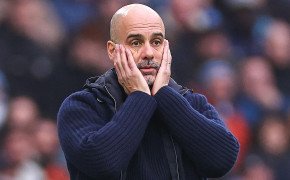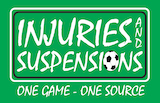Between last season and this, Burnley have managed to flip from being abject away from home (seven points from 19 games) to extremely competent (eight points from four games and undefeated, all in matches against teams from last season’s top seven). The factors that have influenced these extreme returns most likely lie in the realm of negative and positive variance, despite their obvious preference to defend relentlessly. In their away matches this season, they have taken around a quarter of the shots yet scored three-fifths of the goals, rates which don’t significantly change if we add in their home games.
The quick take here is that these extreme numbers are unlikely to hold beyond the very short-term. Burnley haven’t exceeded five shots in any of their last four games, while allowing over 20 per game. If your ability to create scoring opportunities is that limited, then even if you create good quality chances and some goals from that, the likelihood that it will continue to be a prosperous strategy is pretty small. If you continue to allow that many opposition chances, meanwhile, you will eventually start to concede more goal.s So far, the Clarets have allowed around 3.5% of their opponents shots to become goals - no team will maintain that kind of rate in the long-term, whatever system they play.
For now, does it matter? Well, with 12 points and sitting snugly in sixth, sandwiched between Arsenal and Liverpool, it is hard to imagine that Burnley feel skeptical about their long-term prospects. With that kind of platform secured, and a series of tough away fixtures behind them, they are unlikely to make stylistic changes any time soon. One hopes they understand that their system is only partially influencing their success and there is still plenty of time for results to turn.
A frustrating few weeks for Liverpool continued with their 1-1 draw at Newcastle, another game in which they had much the better of the scoring opportunities but failed to secure a win. They are currently suffering from a familiar problem which affected them for large parts of last season too. While their attack is capable of creating a high volume of chances, and their defence is effective at limiting shot volume, they are finding it difficult to prevent the opposition from landing shots on goal. As a result, a simple equation has held: more shots on target has led to more goals.
Over 50% of Liverpool’s opponents shots have hit the target so far this season, a clear league-high and an obviously bad trend to recur. In addition, 20% of their shots allowed have become goals, around double any long-term expectation and around six times the rate of Burnley. Liverpool have allowed 12 goals to Burnley’s five yet allowed only about 40% of the shots.
The positive end of this analysis is that Liverpool’s rates, while perhaps indicative of a problem, are not by any means terminal. Just as Burnley’s rates will cool, Liverpool will certainly warm up somewhat in the longer term. We’re seven games in, and these are some of the wild skews that can be seen at this stage.
Other unfavourable early skews involve player’s scoring rates. Nathan Redmond and Tom Ince lead the way for shots without scoring with 23 and 19 respectively, and a fair balance between attempts inside and outside the box; it’s not all hopeful long-rangers. Redmond has long threatened to break out and become a higher volume contributor, but he's been stuck on six or seven goals per year across the last three seasons. His tepid start certainly hasn’t helped Southampton - when your highest volume shooter just can’t score, it’s a real problem.
This is Ince's third spell in the Premier League and, across around 1300 minutes, he has one goal. Contrast this with 65 goals in the Championship across six and a half seasons and while he can probably consider himself mildly unfortunate not to have notched this season, it feels like there could be a distinct ceiling for his talent. The campaign is still young, though, and if he keeps generating shooting chances at his current rate, he’s sure to score eventually. Prove me wrong, Tom.















